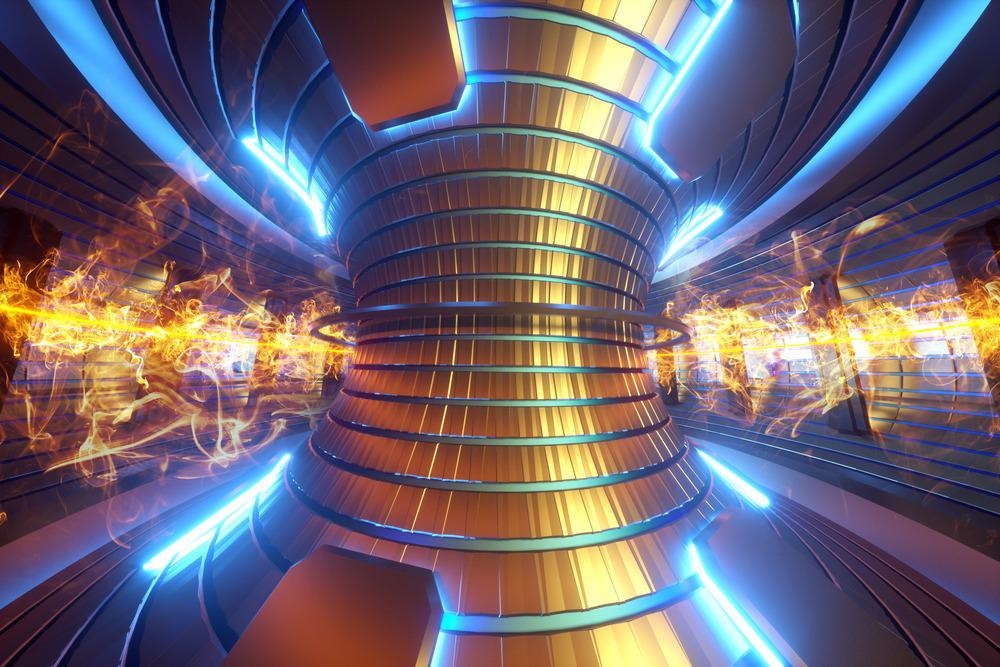
What is Nuclear Fusion?
Nuclear fusion combines two light atomic nuclei to form a heavier one, occurring at super high temperatures and accompanied by the release of huge amounts of energy.
Fusion reactions are the primary energy source for stars, including the sun. However, this reaction can only take place in the presence of extreme heat and pressure. The high temperature gives enough energy to overcome mutual electrical repulsion between nuclei. The attractive nuclear force between the nuclei will surpass the repulsion and allow them to fuse once they are fairly close to one other. The enormous pressure created by the sun's immense gravity creates the ideal circumstances for fusion.
Due to low pressure on Earth, the same conditions for a controlled fusion reaction cannot be replicated. However, significant milestones have been achieved during the past years, and it is hoped that the industrial production of nuclear fusion energy will soon become a reality.
Recent Breakthroughs in Nuclear Fusion
Joint European Torus
Scientists at Oxford's Joint European Torus (JET) laboratory have made a major step forward in developing practical nuclear fusion.
JET has used metals beryllium and tungsten instead of carbon to form the new walls of an 80-cubic-meter toroidal vessel enclosing the magnetic field. As a result, 59 megajoules of energy were produced in five seconds, which is a two-fold increase in the results of a similar experiment in 1997.
The results of the JET experiment are expected to lay the groundwork for future achievements of the International Fusion Experimental Reactor (ITER). ITER will be able to produce an infinite amount of energy at a low initial cost.
First Light Fusion
With its unique projectile technology, First Light Fusion, an Oxford-based startup, has produced energy via nuclear fusion.
The method compresses a fuel pellet to fuse two atoms at extremely high temperatures. The process involves firing a 100 g bullet at 6.5 km/s at the tritium and deuterium pellet from a 22-meter gas cannon. Fusion energy from this method might cost as little as $25 per megawatt-hour compared to $100 per MWh for traditional nuclear power.
National Ignition Facility
Inertial confinement fusion is used at the National Ignition Facility (NIF) to trigger nuclear fusion. An important milestone was reached in August 2021, when the National Ignition Facility (NIF) achieved an output exceeding 1.3 megajoules.
An array of laser-light amplifiers focused laser light onto a hydrogen fuel pellet, which created more than ten quadrillion watts of fusion power in less than 100 trillionths of a second.
What Do These Breakthroughs Mean For the Future of Limitless Clean Energy?
Nuclear fusion is a source of unlimited clean energy, with its fuel reserves being practically inexhaustible.
In the nuclear fusion process, physicists prefer to use deuterium and tritium (hydrogen isotopes) as fuel. Deuterium can be found in high enough concentrations in water. Fission reactors or the addition of lithium to a fusion reactor can both produce tritium. Although lithium is not abundant on land, the seawater has enough to enable fusion power for 30,000 years.
Fusion reaction releases more energy than fission and about 4 million times more than fossil fuels. Only a few grams of fuel can provide energy for several millennia.
In the long run, nuclear fusion provides an unlimited green energy source, and it is fundamentally safe because it cannot start a runaway process.
Challenges to Nuclear Fusion
In the laboratory, fusion processes require more energy to ignite than they can produce.
For JET, two flywheels of 500 megawatts were used to conduct tests. Fusion uses a plasma state mixture of deuterium and tritium, which scientists had little experience with prior to exploring fusion.
The plasma is heated to extraordinarily high temperatures in a fusion reactor and then compressed by magnets. However, part of the material escapes and hits the tungsten armor tiles that line the reactor's walls. A nuclear fusion reactor generates neutrons, which have no radioactive properties. However, the walls of the reactor can become radioactive due to their high energy impact.
Other Nuclear Fusion Developments
Chinese physicists have made a breakthrough that can provide the planet with clean and limitless energy.
On December 30, their nuclear fusion reactor, the Experimental Advanced Superconducting Tokamak, maintained a temperature that was five times the temperature at the core of the sun for 17 minutes and 36 seconds. The international scientific community has hailed the achievement of this artificial sun.
Fusion Systems and MIT scientists began developing the new reactor in early 2018, which would be more compact than its predecessors. They anticipate building a tokamak reactor that is small, efficient, and easy to scale. A nuclear reactor dubbed Sparc could begin generating electricity for the grid by 2030 if all goes as planned.
What More is Needed?
Researchers have made significant progress over the past 70 years despite the seemingly insurmountable roadblocks to commercial fusion.
Professor of inertial fusion research at Oxford University, Peter Norreys, says that recent developments indicate a lot of potentials. However, this does not imply that fusion energy is on the horizon.
Several studies have achieved fusion reactions, despite the lack of a net power gain from the fusion process. The number of resources mobilized through worldwide partnerships and collaboration will determine the amount of time it takes to reproduce the stellar progress.
Future Outlook of Nuclear Fusion
Creating an artificial star is essentially the goal of a fusion reactor. For more than a century, scientists have studied the physics of fusion and worked to harness the process.
As pressures rise to address the effects of climate change through the decarbonization of energy production, recent significant achievements constitute a big step forward on the fusion roadmap as a safe, efficient, low-carbon means of combating the global energy crisis.